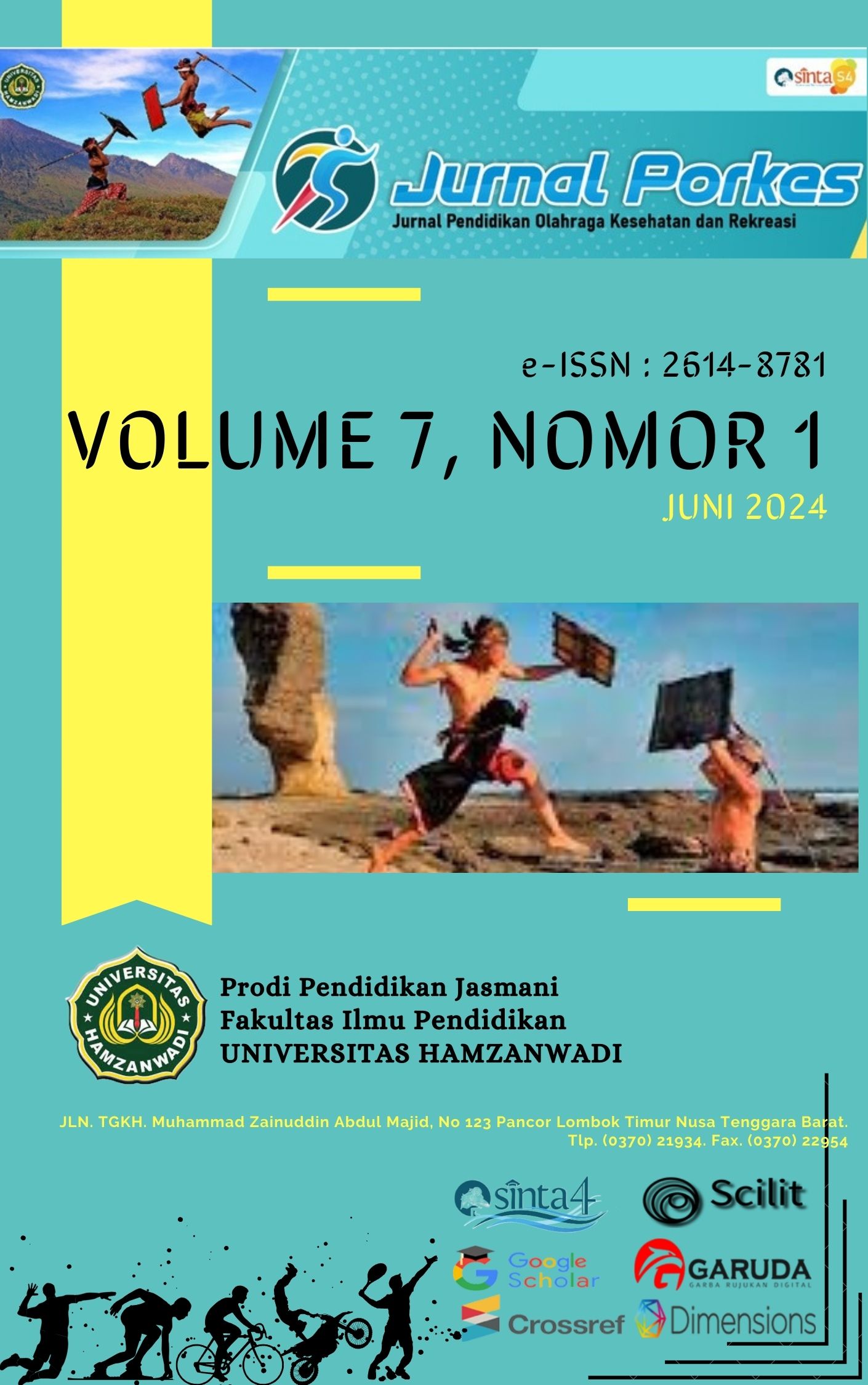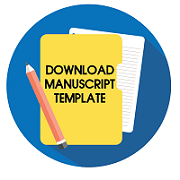Survei tingkat kebugaran jasmani siswa boarding school SMP Budi Mulia
DOI:
https://doi.org/10.29408/porkes.v7i1.25514Keywords:
Physical fitness level; student fitness surveyAbstract
The purpose of the study was to assess the level of physical fitness of boarding school students. A good level of physical fitness can support learning activities and student achievement. The method used was the survey method with the Indonesian student fitness test instrument. The research data were analyzed using descriptive statistics. The results of students (55.8%) had a moderate level of physical fitness, as many as 31.2% of students had a poor level of fitness, and 13% had a good level of fitness. The results of this study indicate that there are still students who have a poor level of physical fitness. This can be caused by several factors, such as lack of physical activity, unhealthy diet, and lack of rest. It is concluded that there is a need for programs to improve physical fitness for boarding school students. These programs can be in the form of regular sports activities, education about healthy eating patterns, and the provision of adequate sports facilities. By increasing the level of physical fitness of students, it is hoped that it can also improve learning activities and student achievement at school.
References
Abdullah, A. (2017). Pendekatan dan Model Pembelajaran yang Mengaktifkan Siswa. Jurnal Edureligia, 1(1), 45–62. https://doi.org/10.33650/edureligia.v1i2.45
Abidin, A. M. (2018). Penerapan Pendidikan Karakter pada Kegiatan Ekstrakurikuler Mellui Metode Pembiasaan. Jurnal Kependidikan Didaktika, 12(2), 1–10. https://doi.org/10.30863/didaktika.v12i2.185
Arieska, P. K., & Herdinasi, N. (2018). Pemilihan Teknik Sampling Berdasarkan Perhitungan Efisiensi Relatif. Jurnal Statistika Universitas Muhammadiyah Semarang, 6(2), 166–177. https://jurnal.unimus.ac.id/index.php/statistik/article/view/4322
Bangun, S. Y. (2012). Analisis Tujuan Materi Pelajaran dan Metode Pembelajaran dalam Pendidikan Jasmani. Jurnal Cerdas Sifa Pendidikan, 1(1), 1–10. https://online-journal.unja.ac.id/csp/article/view/706
Bangun, S. Y., & Zaluku, J. S. (2019). Survey Analisis Tingkat Kebugaran Jasmani Pelajar SMP di Pondok Pesantren Ta ’ dib Asyakirin Medan. Jurnal Pemikiran Penelitian dan Pengabdian Masyarakat Bidang Pendidikan, 9(3), 273–279. https://doi.org/10.26858/publikan.v9i3. 10455
Berndt, A. E. (2020). Sampling Methods. Journal of Human Lactation, 36(2), 1–10. https://doi.org/10.1177/0890334420906850
Fatmawati, I. (2021). Peran Guru dalam Pengembangan Kurikulum dan Pembelajaran. Jurnal Revorma, 1(1), 20–37. https://doi.org/10.62825/revorma.v1i1.4
Febriyanti, N. R., & Pramono, H. (2022). Indonesian Journal for Proses Pembelajaran Pendidikan Jasmani Adaptif Anak Berkebutuhan Khusus. Indonesian Journal for Physical Education and Sport, 3(1), 333–339. https://doi.org/10.15294/INAPES.V3I1.48150
Iswanto, A., & Widayati, E. (2021). Pembelajaran Pendidikan Jasmani yang Efektif dan Berkualitas. Jurnal Majora, 27(1), 13–17. https://doi.org/10.21831/mayora.v27i1.34259
Jayul, A., & Irwanto, E. (2020). Model Pembelajaran Daring Sebagai Alternatif Proses Kegiatan Belajar Pendidikan Jasmani di Tengah Pandemi Covid-19. Jurnal Pendidikan Kesehatan Rekreasi, 6(2), 96–103. https://ojs.mahadewa.ac.id/index.php/jpkr/article/view/689
Lafendry, F. (2020). Kualifikasi dan Kompetensi Guru dalam Dunia Pendidikan. Jurnal Tarbawi, 3(3), 1–16. https://stai-binamadani.e-journal.id/Tarbawi/article/view/166
Mustafa, P. S. (2022). Peran Pendidikan Jasmani untuk Mewujudkan Tujuan Pendidikan Nasional. Jurnal Ilmiah Wahana Pendidikan, 8(9), 68–80. https://doi.org/10.5281/zenodo.6629984
Marisa, M. (2021). Inovasi Kurikulum Merdeka Belajar di Era Society 5.0. Jurnal Sejarah, Pendidikan dan Humanior5, 5, 66–78. https://doi.org/10.36526/js.v3i2
Parhan, M. P. (2018). Kontekstualisasi Materi Dalam Pembelajaran. Jurnal Adi Widya, 3(1), 7–18. https://www.ejournal.ihdn.ac.id/index.php/AW/article/view/901
Ritiauw, P. P., & Rumawatine, Z. (2023). Evaluasi Pembelajaran Pendidikan Jasmani pada SMA Se-Kota Dobo. Jurnal Jrpp, 6(4), 2022–2029. https://journal.universitaspahlawan.ac.id/index.php/jrpp/article/view/21532
Raharjo, R. (2020). Analisis Perkembangan Kurikulum PPKn: Dari Rentjana Pelajaran 1947 sampai dengan Merdeka Belajar 2020. PKn Progresif: Jurnal Pemikiran dan Penelitian Kewarganegaraan, 15(1). https://doi.org/10.20961/pknp.v15i1.44901
Sari, R. K. (2017). Kewajiban Belajar dalam Tinjauan Hadits Rasulullah saw. Jurnal Pendidikan dan Ilmu Kependidikan, 2(1), 91–99. https://jurnal.dharmawangsa.ac.id/index.php/sabilarrasyad/article/view/118
Sholikhah, A. (2016). Statistik Deskriptif dalam Penelitian Kualitatif. Jurnal Komunika, 10(2), 342–362. https://doi.org/10.24090/komunika.v10i2.953
Suriani, N., Risnita, R., & Jailani, M. S. (2023). Konsep Populasi dan Sampling Serta Pemilihan Partisipan Ditinjau dari Penelitian Ilmiah Pendidikan. Jurnal Pendidikan Islam (Ihsan), 1(2), 24–36. https://doi.org/10.61104/ihsan.v1i2.55
Sardiyanah, S. (2020). Belajar dan Faktor yang Mempengaruhinya. Jurnal Al-Qalam: Jurnal Kajian Islam & Pendidikan, 7(1). https://doi.org/10.47435/al-qalam.v7i1.187
Downloads
Published
How to Cite
Issue
Section
License
Copyright (c) 2024 Aziz Rahmawan, Saepul Ma’mun, Aria Kusuma, Dira Fauzi

This work is licensed under a Creative Commons Attribution-ShareAlike 4.0 International License.
![]()
Jurnal Porkes is licensed under a Creative Commons Attribution-Share Alike 4.0 International License







